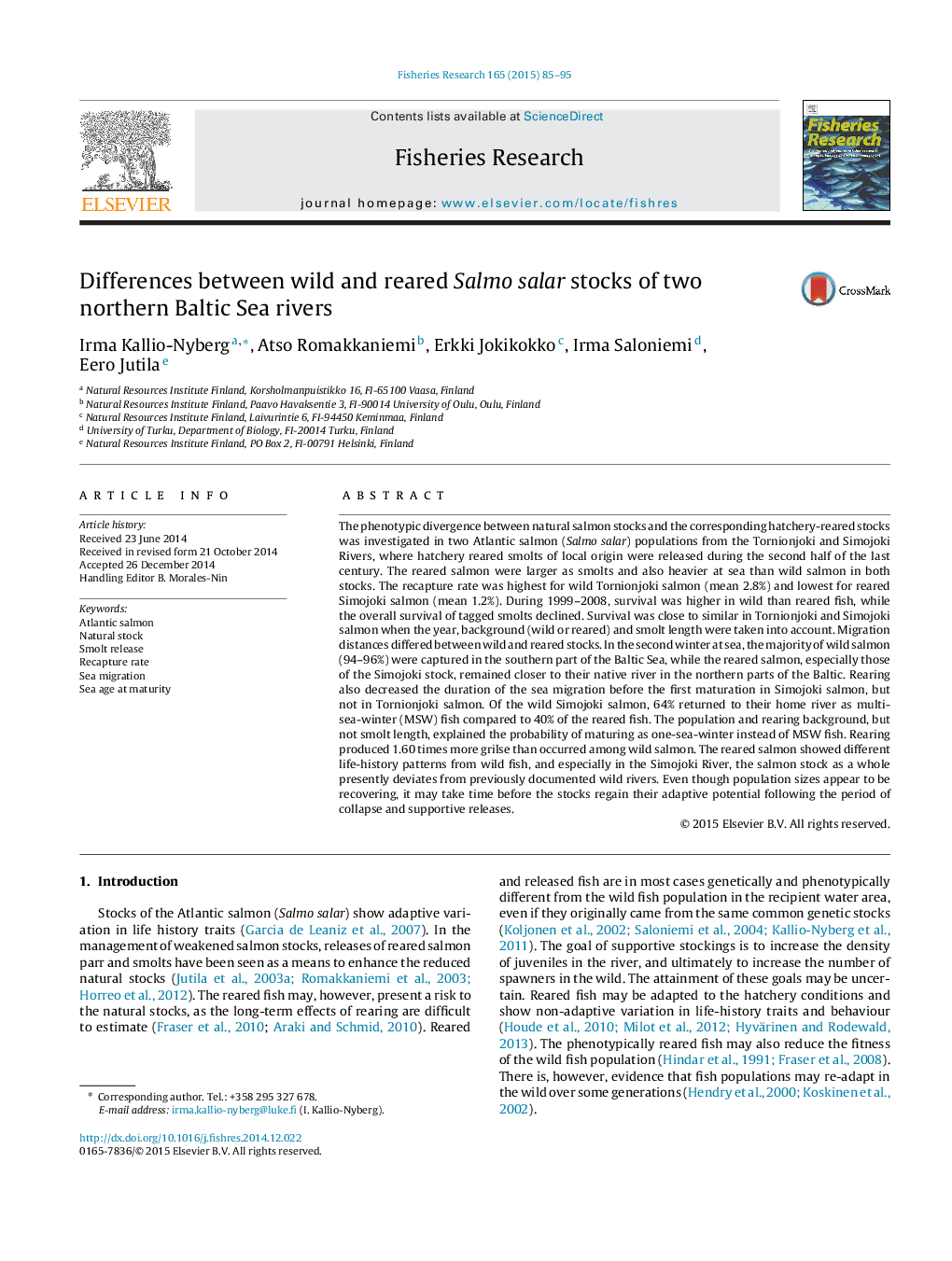| کد مقاله | کد نشریه | سال انتشار | مقاله انگلیسی | نسخه تمام متن |
|---|---|---|---|---|
| 6385638 | 1626803 | 2015 | 11 صفحه PDF | دانلود رایگان |
عنوان انگلیسی مقاله ISI
Differences between wild and reared Salmo salar stocks of two northern Baltic Sea rivers
ترجمه فارسی عنوان
تفاوت میان سهام سالموالار وحشی و کشت دو رود شمال دریای بالتیک
دانلود مقاله + سفارش ترجمه
دانلود مقاله ISI انگلیسی
رایگان برای ایرانیان
کلمات کلیدی
ماهی سالمون دریای آتلانتیک، سهام طبیعی، آزادی اسمولت، نرخ بازپرداخت، مهاجرت دریایی، سن دریایی در زمان بلوغ،
موضوعات مرتبط
علوم زیستی و بیوفناوری
علوم کشاورزی و بیولوژیک
علوم آبزیان
چکیده انگلیسی
The phenotypic divergence between natural salmon stocks and the corresponding hatchery-reared stocks was investigated in two Atlantic salmon (Salmo salar) populations from the Tornionjoki and Simojoki Rivers, where hatchery reared smolts of local origin were released during the second half of the last century. The reared salmon were larger as smolts and also heavier at sea than wild salmon in both stocks. The recapture rate was highest for wild Tornionjoki salmon (mean 2.8%) and lowest for reared Simojoki salmon (mean 1.2%). During 1999-2008, survival was higher in wild than reared fish, while the overall survival of tagged smolts declined. Survival was close to similar in Tornionjoki and Simojoki salmon when the year, background (wild or reared) and smolt length were taken into account. Migration distances differed between wild and reared stocks. In the second winter at sea, the majority of wild salmon (94-96%) were captured in the southern part of the Baltic Sea, while the reared salmon, especially those of the Simojoki stock, remained closer to their native river in the northern parts of the Baltic. Rearing also decreased the duration of the sea migration before the first maturation in Simojoki salmon, but not in Tornionjoki salmon. Of the wild Simojoki salmon, 64% returned to their home river as multi-sea-winter (MSW) fish compared to 40% of the reared fish. The population and rearing background, but not smolt length, explained the probability of maturing as one-sea-winter instead of MSW fish. Rearing produced 1.60 times more grilse than occurred among wild salmon. The reared salmon showed different life-history patterns from wild fish, and especially in the Simojoki River, the salmon stock as a whole presently deviates from previously documented wild rivers. Even though population sizes appear to be recovering, it may take time before the stocks regain their adaptive potential following the period of collapse and supportive releases.
ناشر
Database: Elsevier - ScienceDirect (ساینس دایرکت)
Journal: Fisheries Research - Volume 165, May 2015, Pages 85-95
Journal: Fisheries Research - Volume 165, May 2015, Pages 85-95
نویسندگان
Irma Kallio-Nyberg, Atso Romakkaniemi, Erkki Jokikokko, Irma Saloniemi, Eero Jutila,
